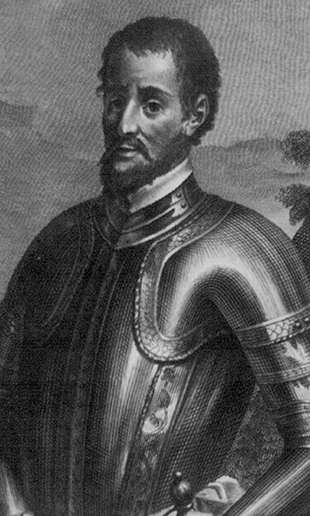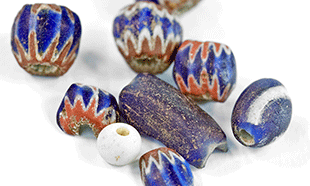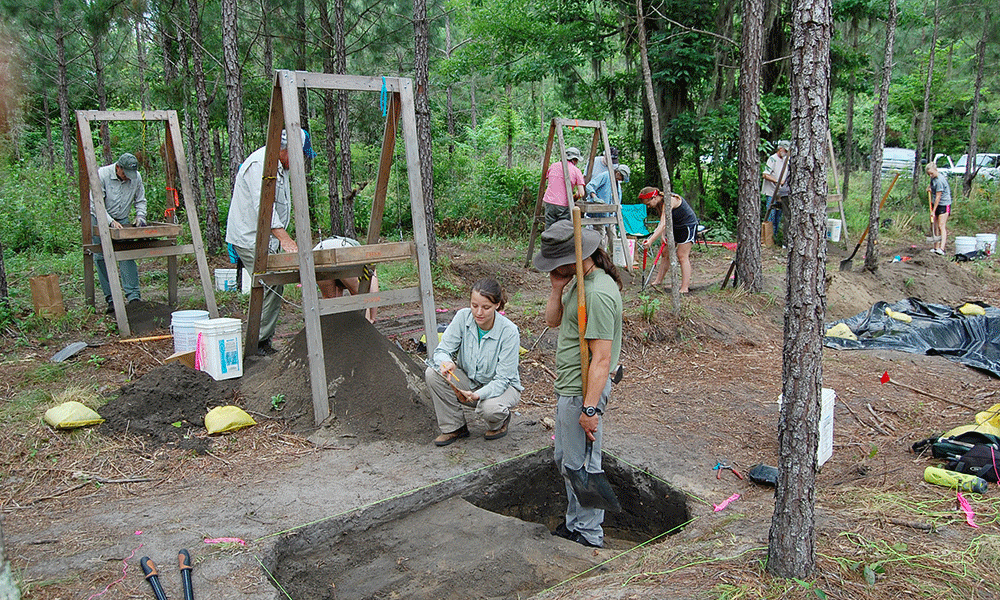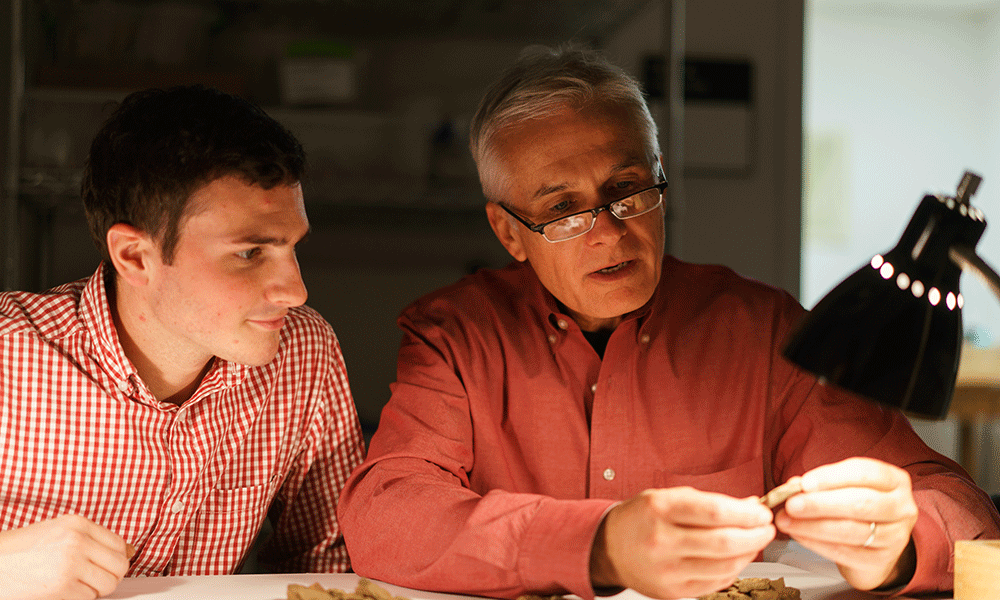Redrawing Soto's map?
Physical artifacts are leading anthropologists to question where Soto explored
Arts and CultureSUMMARY: JMU anthropologist Dennis Blanton and his students are analyzing archaeological samples recovered at the Glass Site in Georgia, tracking the path of 16th-century Spanish explorer Hernando de Soto's expedition through modern-day America's interior southeast. Their work is redefining a meeting of two cultures, the Spanish explorers and the ancestors of the Creek people.
Download the Madison app (iOS & Android) to view this story and discover more features on your device for an immersive, interactive experience!
The discovery
James Madison University anthropologist Dennis Blanton never planned to follow the trail of Spanish explorer Hernando de Soto through the American southeast. But in 2006, with the discovery of a single multicolored bead excavated in south central Georgia, his archaeological path became inextricably intertwined with the world of the first European to encounter the Mississippi River.

Excavating at a place called the Glass Site, Blanton and a team of professional archaeologists and volunteers from the Fernbank Museum of Natural History in Atlanta were enduring typical hot, humid Georgia conditions in Blanton’s quest to locate the site of an early 17th century Spanish mission, Santa Isabel de Utinahica. The explorations of de Soto were far away in time and location in the archaeologists’ minds.
As a student of southeastern American history and archaeology, Blanton believed the quest for Soto was already in the hands of fully qualified scholars. Plus, scholars, including Blanton’s University of Georgia mentor and Soto expert the late Charles Hudson, believed first-hand narratives by the explorer’s party indicated the path through Georgia was some 80 miles west of the Glass Site. But when a high-school student volunteering at the excavation showed Blanton a multicolored bead she had found while screening soil and asked, “Is this anything?” the archaeologist realized “we had potentially turned the story on its head.”

“It was electrifying for me,” he recalls the moment he recognized the bead as a Soto-era artifact from the 1500s, 100 years too early to indicate the Spanish mission he sought. His next thought: “What’s it doing here?”
“I felt an obligation to pursue it,” Blanton said, “because one bead does not a Soto site make.” Over the course of excavation seasons since 2006, more beads, iron and other metal artifacts have been uncovered, all indicative of Spanish contact with Native Peoples.
“It is a very rich site,” Blanton said. “Very clearly it was an important community in the Indian world.” The trove of artifacts recovered in the last 10 years has convinced Blanton that the Glass Site evidence represents a meeting of two cultures – the Spanish explorers and the ancestors of the Creek people. He posits that the Glass Site is the principal town of the Indian province called Ichisi.
While finding Soto-era artifacts was a surprise to Blanton, he said their existence is logical. “Soto’s modus operandi was to find the richest Indian communities,” places his band of some 600 explorers would obtain food and possibly find the precious metals they sought throughout the expedition.

“The weight of the evidence is that they (the Spanish artifacts) are the result of an encounter with Soto,” Blanton said. Now, he and JMU anthropology students are analyzing archaeological samples recovered at the Glass Site during the summer of 2015 to learn more. Their work is supported by a $1,520 grant from the Fernbank Museum of Natural History.
Among the questions they are considering is if the 2.8-acre site is indeed Ichisi. Historical narratives from members of Soto’s expedition chronicle the party’s encampment near the settlement from March 30 to April 2, 1540.
Work conducted from 2006 through 2015 has fairly well defined the Glass Site’s Indian occupation, which is a circular area resembling the shape of a bagel. A major feature included a council house or temple, where many of the uncovered Spanish artifacts were concentrated. Still a puzzle is the exact location of Soto’s encampment.
|
The weight of the evidence is that [the Spanish artifacts] are a result of an encounter with Soto. - Dennis Blanton |
But results received in January of radiocarbon dating on burned wood excavated from the eastern ridge of the site – an area containing an abundance of Indian artifacts and an iron axe blade – substantiate that there is “a very, very high probability the Glass Site was actively occupied at the time Soto and his small army passed through that part of Georgia,” Blanton said.

New questions
Confirming whether or not Soto’s expedition encountered Native Peoples at the Glass Site is important because Soto was like an early anthropologist in that he described the way of life of people he met along the southeastern trail. “If we can pinpoint where Soto was, we have a bridge to the geography of prehistoric native populations,” Blanton said. During the 2014 and 2015 excavations, Blanton was looking for closure on the site’s interpretation. Instead, a new wrinkle emerged in the form of “wrong type glass beads,” as Blanton described them, found in one spot on the site. The beads, while of European origin, are probably from the latter half of the 16th century.
“This is what makes archaeology both incredibly interesting and exciting, but also complicated, even maddening,” Blanton said. “We have introduced new questions.”
Whatever mysteries the findings reveal to today’s and tomorrow’s discoverers, Blanton is confident in an important fact: “The Glass Site has produced more Spanish artifacts than any other excavation in the interior Southeast.” “By the time of his retirement, Dr. Hudson was saying that we can only estimate Soto’s path by studying the historical narratives,” Blanton said. “He believed that we had squeezed all the life we could out of the written record and that it would be left to archaeologists to bring precision to the story. That’s what I feel we are doing.”

